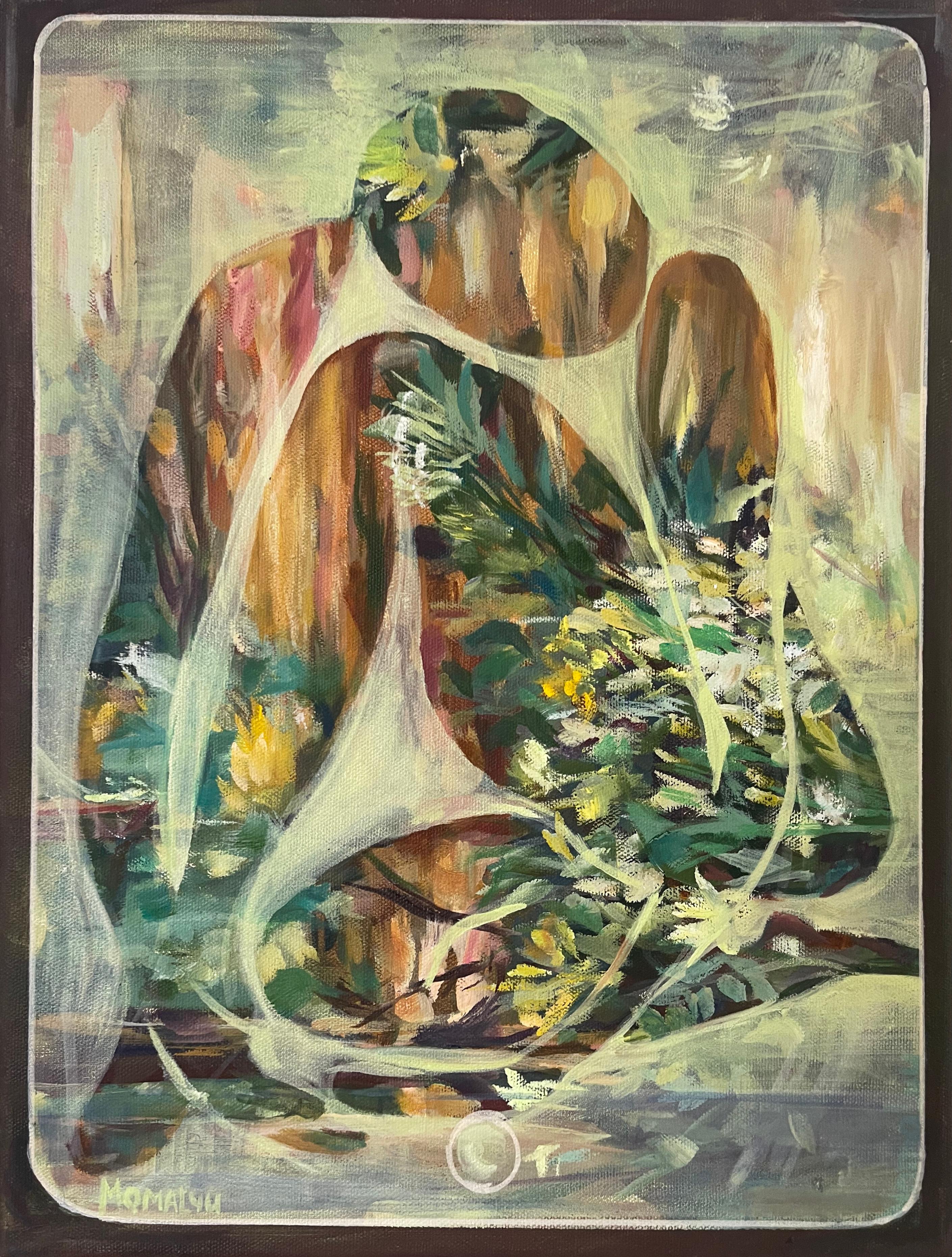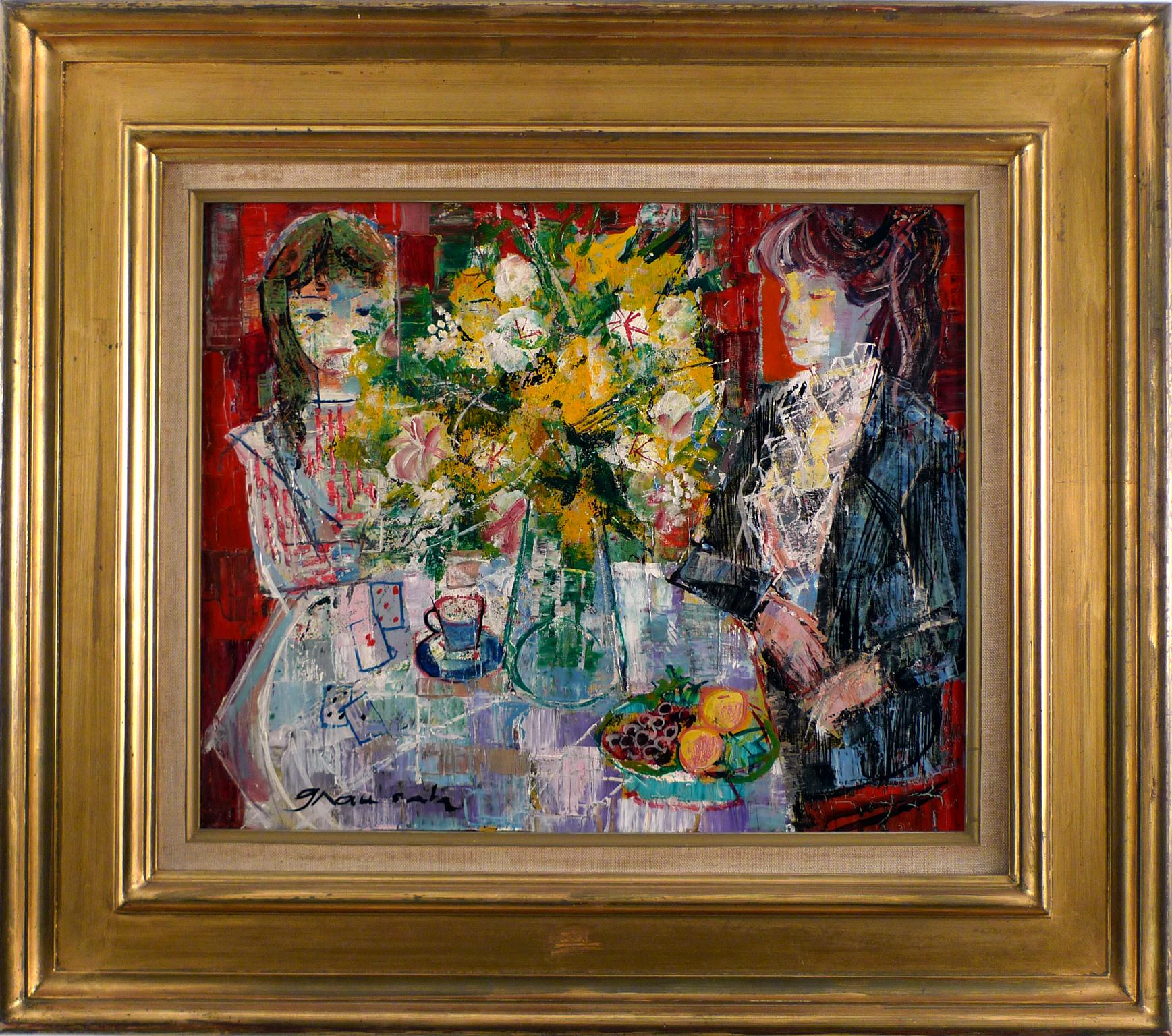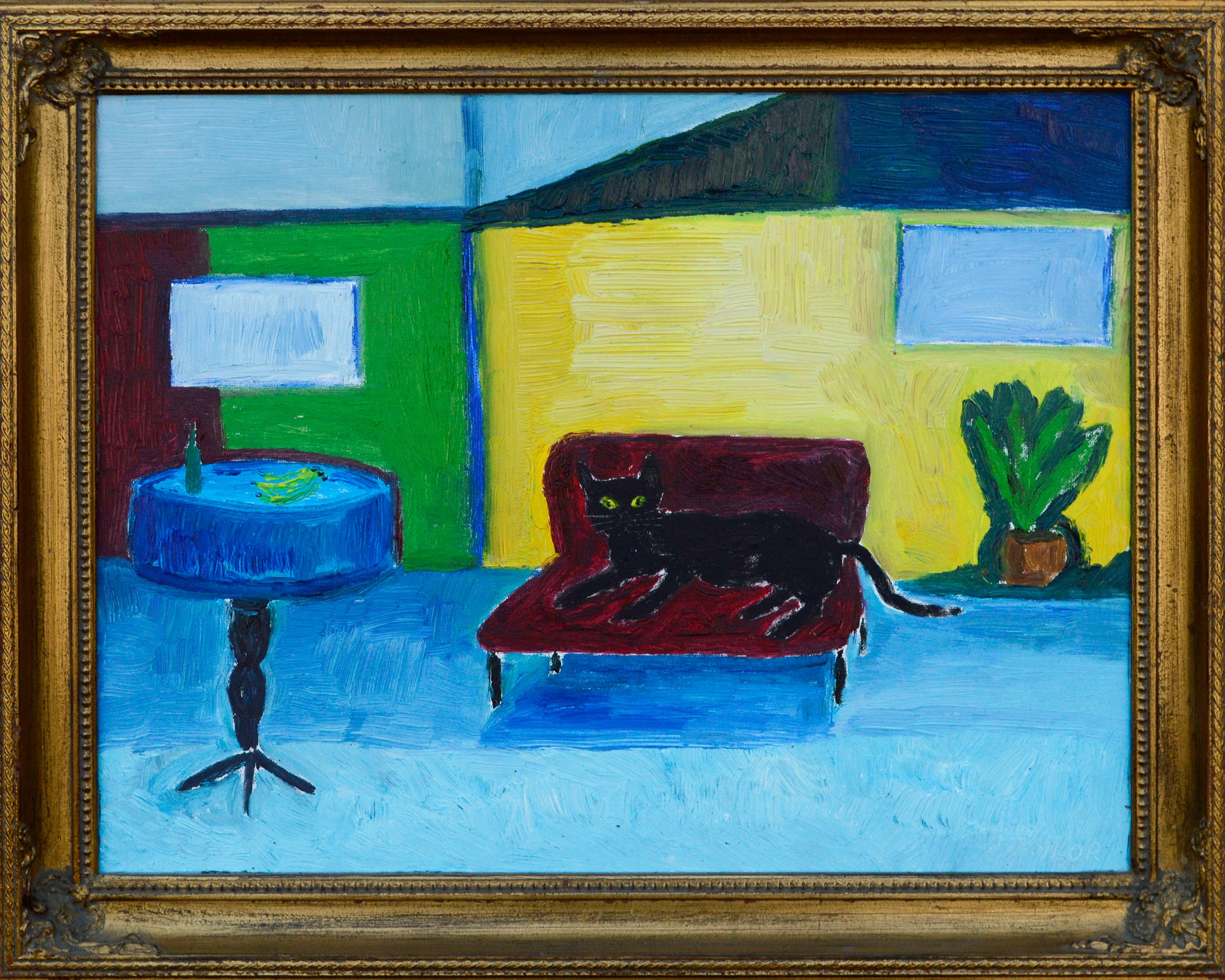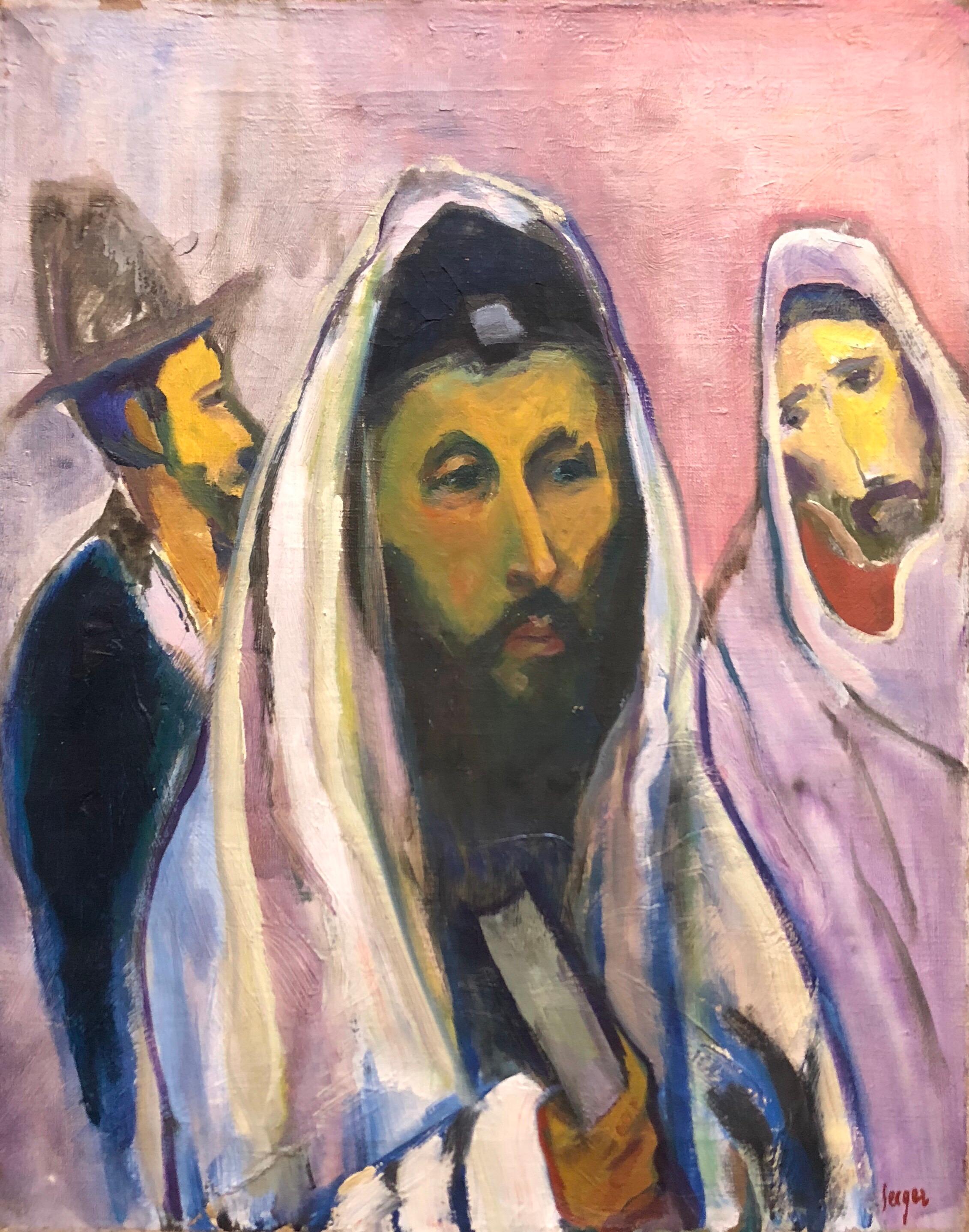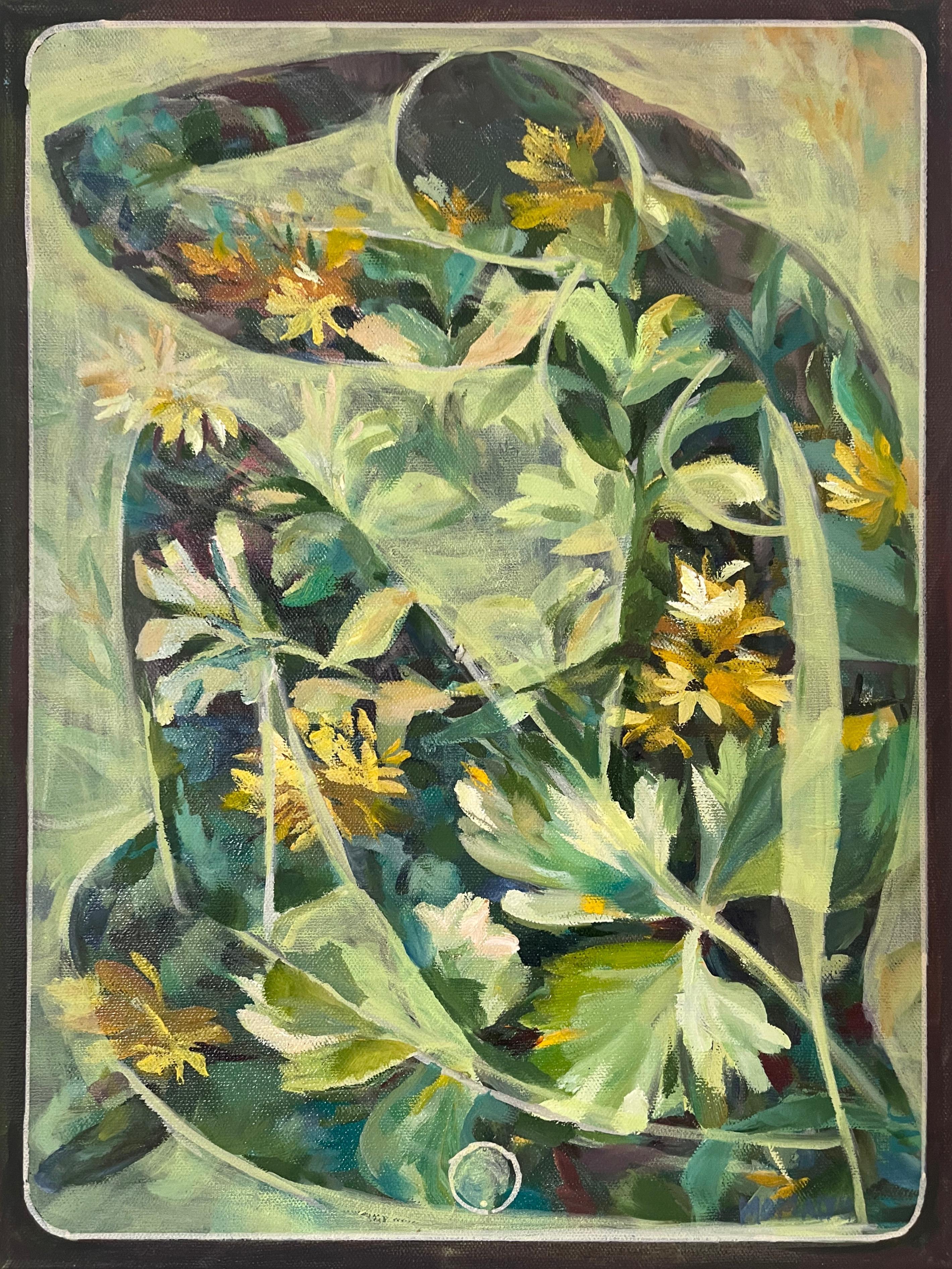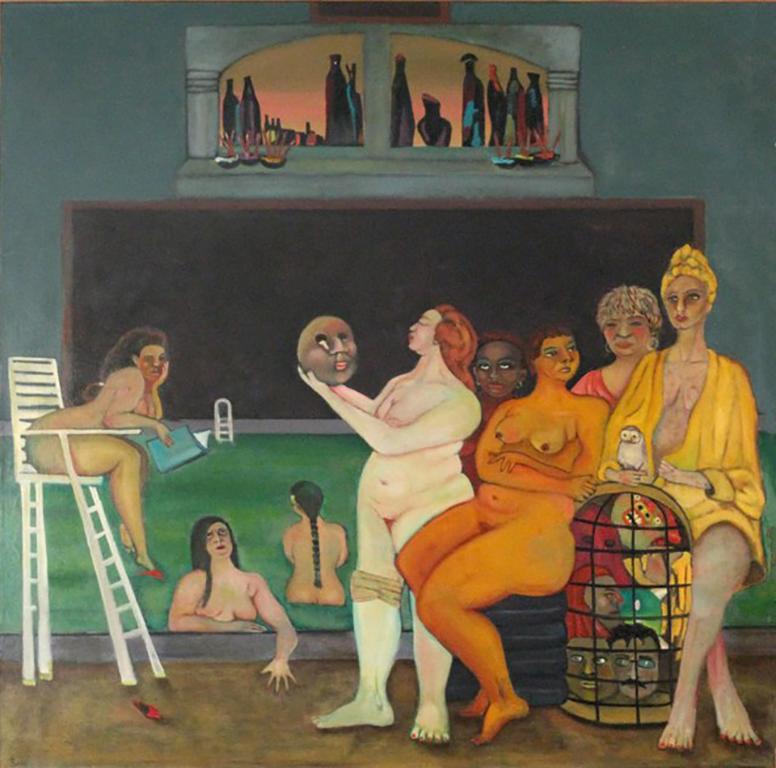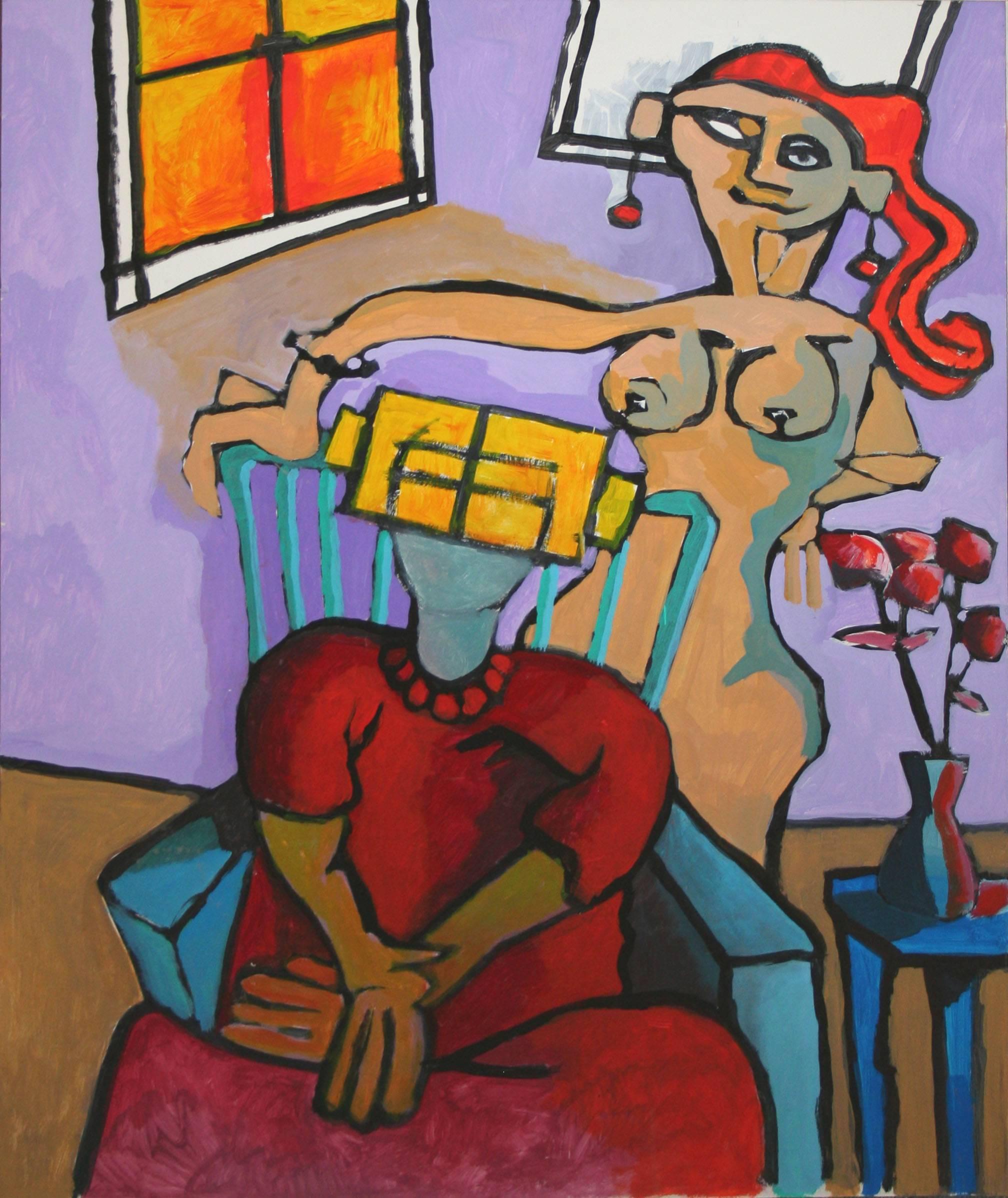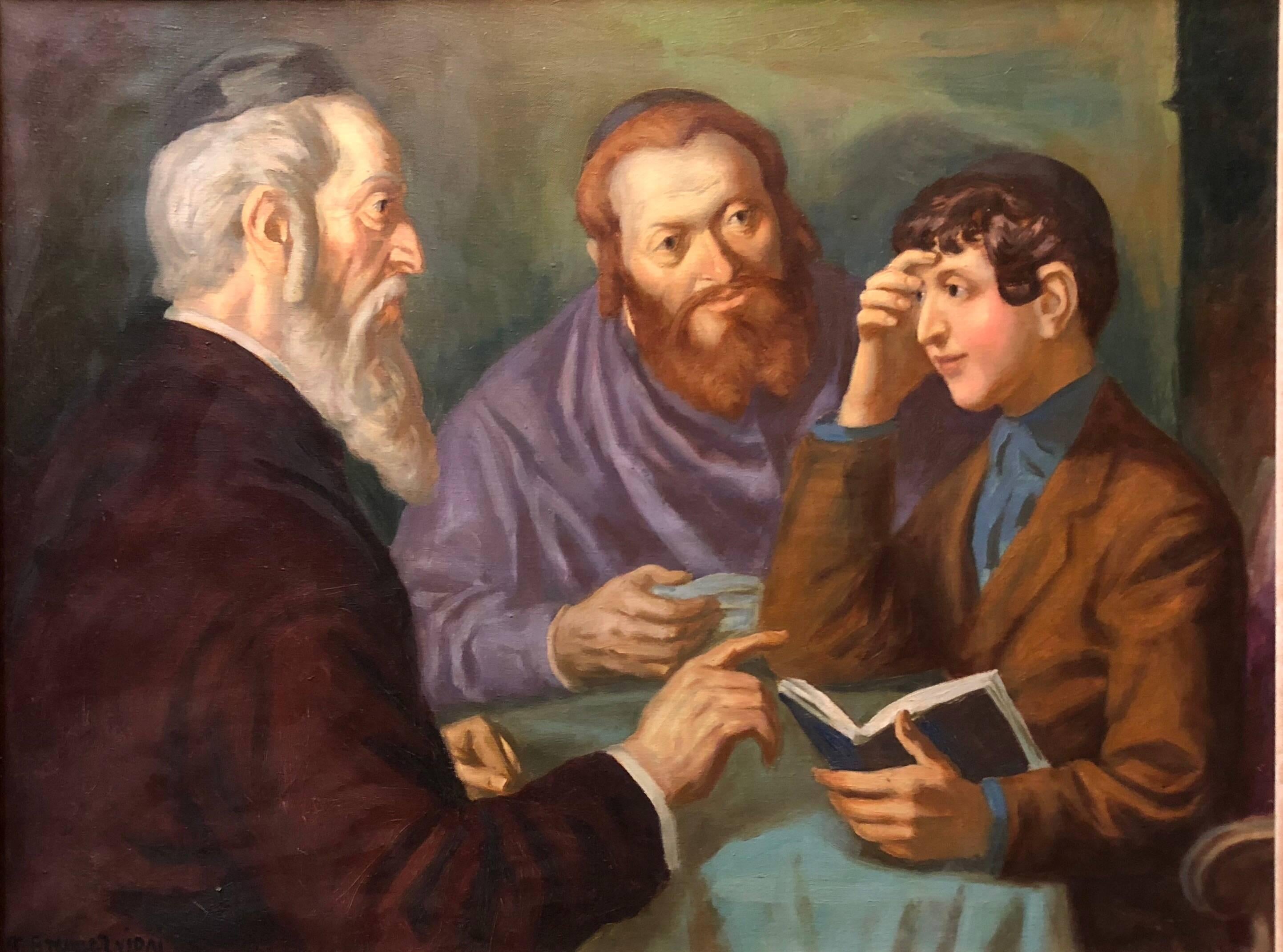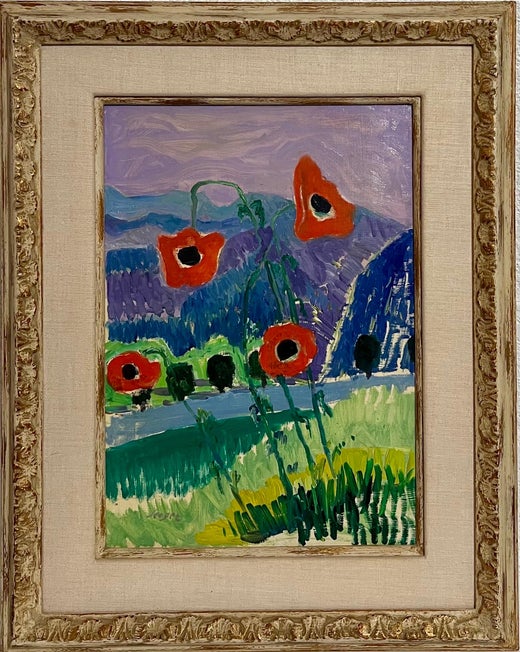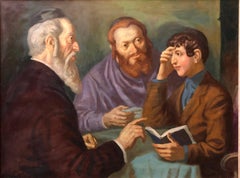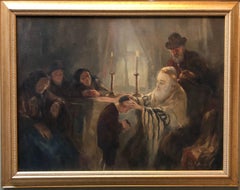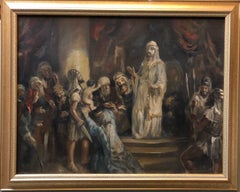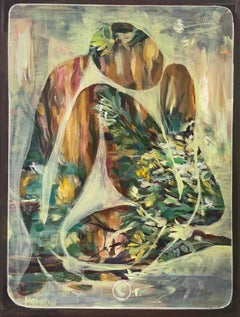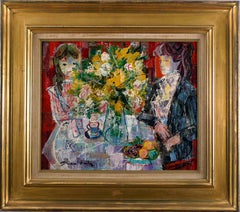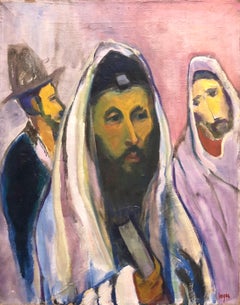
Polish French Fauvist Judaica Oil Painting Rabbi at Prayer
View Similar Items
Want more images or videos?
Request additional images or videos from the seller
1 of 8
Frederick B. SergerPolish French Fauvist Judaica Oil Painting Rabbi at Prayerc.1940s
c.1940s
About the Item
- Creator:Frederick B. Serger (1889-1965, American)
- Creation Year:c.1940s
- Dimensions:Height: 20 in (50.8 cm)Width: 16 in (40.64 cm)
- Medium:
- Movement & Style:
- Period:
- Condition:minor wear. paint loss around edge where it was under frame.
- Gallery Location:Surfside, FL
- Reference Number:1stDibs: LU3823036933
Frederick B. Serger
Frederick B. Serger (1889-1965) was an influential Polish-born painter known for his contributions to modern art. Born in Lwów, then part of the Austro-Hungarian Empire (now Lviv, Ukraine), Serger pursued his artistic education in Vienna and Munich, where he developed a distinctive style that melded traditional techniques with modernist sensibilities. His work, characterized by its vivid color palette and dynamic compositions, often depicted scenes of rural life, landscapes, and portraits, reflecting his deep connection to his heritage and the changing times. In the 1920s and 1930s, Serger's art gained considerable recognition in Europe, and he exhibited extensively in major cities including Paris, Berlin, and Vienna. The advent of World War II forced him to flee Europe, and he eventually settled in the United States. In America, Serger continued to paint and exhibit, adapting to his new environment while maintaining the unique style that had defined his earlier works. Serger's legacy lies in his ability to bridge European and American art traditions, creating a body of work that remains significant in the study of 20th-century art. His paintings are held in various private and public collections, serving as a testament to his enduring influence and artistic vision.
About the Seller
4.9
Platinum Seller
Premium sellers with a 4.7+ rating and 24-hour response times
Established in 1995
1stDibs seller since 2014
1,765 sales on 1stDibs
Typical response time: 1 hour
Authenticity Guarantee
In the unlikely event there’s an issue with an item’s authenticity, contact us within 1 year for a full refund. DetailsMoney-Back Guarantee
If your item is not as described, is damaged in transit, or does not arrive, contact us within 7 days for a full refund. Details24-Hour Cancellation
You have a 24-hour grace period in which to reconsider your purchase, with no questions asked.Vetted Professional Sellers
Our world-class sellers must adhere to strict standards for service and quality, maintaining the integrity of our listings.Price-Match Guarantee
If you find that a seller listed the same item for a lower price elsewhere, we’ll match it.Trusted Global Delivery
Our best-in-class carrier network provides specialized shipping options worldwide, including custom delivery.More From This Seller
View AllPolish French Fauvist Judaica Oil Painting Rabbi at Prayer
By Frederick B. Serger
Located in Surfside, FL
Genre: Impressionist
Subject: People
Medium: Oil
Surface: Panel
Frederick Serger (given name Frederick Bedrick Sinaberger) was born in 1889 to a family of Jewish manufacturers in the village of Ivancice near Brno Moravia, a province of Czechoslovakia. Showing artistic talent at a young age, he attended art schools in Brno, Vienna, and Munich. During World War I, Serger joined the Austrian Army...
Category
1940s Fauvist Figurative Paintings
Materials
Canvas, Oil
the Rabbi's Cheder Test Hungarian Judaica Oil Painting
By Nandor Vydai Brenner
Located in Surfside, FL
Rare Pre World War II (Pre Holocaust) Judaica Art. European Judaic art from this period is exceedingly rare.
Nandor Brenner Viday, Born in Budapest, Hungary in 1903, date of death u...
Category
Early 20th Century Post-Impressionist Figurative Paintings
Materials
Canvas, Oil
Blessing of the Tzadik (Rebbe) Rare Hungarian Judaica Oil Painting
By Anton Peczely
Located in Surfside, FL
Rare Pre World War II (Pre Holocaust) Judaica Art. European Judaic art from this period is exceedingly rare.
Péczely Antal Anton 1891 - 1963
Known for his Jewish genre scenes, Chess scenes and other early 20th Century salon style paintings. In the tradition of Moritz Oppenheim...
Category
Early 20th Century Post-Impressionist Figurative Paintings
Materials
Oil, Board
Wisdom of King Solomon Rare Biblical Hungarian Judaica Oil Painting
By Anton Peczely
Located in Surfside, FL
Rare Pre World War II (Pre Holocaust) Judaica Art. European Judaic art from this period is exceedingly rare.
Péczely Antal Anton 1891 - 1963
Known for his Jewish genre scenes, Chess scenes and other early 20th Century salon style paintings. In the tradition of Moritz Oppenheim...
Category
Early 20th Century Post-Impressionist Figurative Paintings
Materials
Oil, Board
Rare French, Paris 1935 Judaica Oil Painting Rabbis Studying S. Fleischman
Located in Surfside, FL
Rare Judaica Art. Jewish genre scene. In the tradition of Moritz Oppenheim, Isidor Kauffman and Maurycy Gottlieb and later of Tully Filmus, Zalman Kleinman and Itshak Holtz the artist captures this Jewish scene with a particular sensitivity. Part of the Ecole De Paris The term "School of Paris" was used in 1925 by André Warnod (fr) to refer to the many foreign-born artists who had migrated to Paris.
School of Paris artists were progressively marginalized. Beginning in 1935 art publications no longer wrote about Marc Chagall, just magazines for Jewish audiences, and by June 1940 when the Vichy government took power, School of Paris artists could no longer exhibit in Paris at all.
The artists working in Paris between World War I and World War II experimented with various styles including Cubism, Orphism, Surrealism and Dada. Foreign and French artists working in Paris included Jean Arp, Joan Miró, Constantin Brâncuși, Raoul Dufy, Tsuguharu Foujita, artists from Belarus like Michel Kikoine, Pinchus Kremegne, and Jacques Lipchitz, the Polish artist Marek Szwarc and others such as Russian-born prince Alexis Arapoff. A significant subset, the Jewish artists, came to be known as the Jewish School of Paris or the School of Montparnasse. The "core members were almost all Jews, and the resentment expressed toward them by French critics in the 1930s was unquestionably fueled by anti-Semitism." One account points to the 1924 Salon des Indépendants, which decided to separate the works of French-born artists from those by immigrants; in response critic Roger Allard (fr) referred to them as the School of Paris. Jewish members of the group included Emmanuel Mané-Katz, Chaim Soutine, Adolphe Féder, Chagall, Moïse Kisling, Maxa Nordau...
Category
Mid-20th Century Post-Impressionist Figurative Paintings
Materials
Oil, Board
Japanese Fauvist Colorful Oil Painting Chinese Ceramic Jars with Fan and Apple
Located in Surfside, FL
Yoshio Aoyama (Japanese, 1894-1996) "Nature Morte". Oil on canvas. 1981. Signed 'Aoyama' (upper left). Signed and titled 'Nature Morte' verso. 15" x 18" ...
Category
1980s Fauvist Interior Paintings
Materials
Canvas, Oil
You May Also Like
"What about stereotypes?" 3 in the triptych. Decorative social art
Located in Zofingen, AG
The third work of the triptych “What about stereotypes? ”
Female silhouette combined with flowers - a decorative subject - but with a deep concept, a series of paintings were prese...
Category
2010s Fauvist Figurative Paintings
Materials
Canvas, Oil
What about stereotypes? 1 in the triptych. Female silhouette
Located in Zofingen, AG
The first work of the triptych “What about stereotypes? ”
Female silhouette combined with flowers - a decorative subject - but with a deep concept, a series of paintings were presen...
Category
2010s Fauvist Figurative Paintings
Materials
Canvas, Oil
"Interieur aux Fleurs Jaunes" 20th Century Oil on Canvas by Emilio Grau Sala
By Emilio Grau Sala
Located in Madrid, ES
EMILIO GRAU SALA
Spanish, 1911 - 1975
INTERIEUR AUX FLEURS JAUNES
signed "Grau Sala" (lower left)
signed again, located, dated and titled "Grau Sala, Paris 61, Interieur aux fleurs jaunes" (on the reverse)
oil on canvas
15 x 18-1/4 inches (38 x 46 cm.)
framed: 23-1/2 x 26-1/2 (59.5 x 67 cm.)
PROVENANCE
Private Parisian Collection
Interieur aux fleurs jaunes
This interior with two female figures where also the plans made in different colors are drawing the composition.
The abundant pictorial material distributed in geometric portions, gives life to the tablecloth and mother and daughter figures, in black and white colors of the jacket, while the black line takes care of the environments so as not to separate them.
The fruit bowl and flowers give a cheerful touch with their pastel tones.
Emilio Grau Sala came from a family of artists. He was born in Barcelona in 1911 and his father, a good cartoonist, had been one of the promoters of the "Salon des Humanistes" and made his exhibitions normally in "Sala Parés", Barcelona.
His first works were exhibited at the Salon des Independents. In the years 1930-33 he had painted under the influence of Cubism, especially that of Torres García. It is from that time a painting of the port of Barcelona, geometric and structural, which completely anticipated what would later be his work. His personality began fully painting watercolors and oils with a certain fantasy character, with a point of decorative instinct and themes full of naivety and grace. Romantic interiors, paddocks, port scenes, sailors, etc.
Grau Sala was essentially a Mediterranean painter, son of post-impressionism and enriched with French painting of the last fifty years. Mediterranean because his work has the color and light of that land.
He understood and assimilated impressionist painting very well, and for that reason he was never subject to the modules of a formulist realism, nor the sexigencias of the forms.
In Paris he found the best environment to give us a fruitful and intense work, because he could use the expressive potential of French art to enrich it.
All this made him a very esteemed artist everywhere where his work was known. He was also very often required to illustrate books and publications in Paris. Also his posters were very successful.
He painted a large number of subjects, but perhaps the theme of horse racing is where you can see in a very clear way the joyful and optimistic life that was lived at that time. In this fabric there is an explosion of juicy and vivid colors full of ingenuity and simplicity in its composition. Only a teacher could turn the complicated into something simple and beautiful. Before this work we feel a deep emotion, the emotion of before starting a horse race. Joy and nervousness at the same time. Especially since it is a direct emotion. There are no intermediaries between our eyes and what the work intends to tell us. This is precisely what seduces and catches us of this painting.
His works can be found in the Museums of the Villa de Paris, L'Ile de France Museum, at the Château de Sceaux, Honfleur Museum, La Rochelle Museum, Barcelona Museum...
Category
1960s Fauvist Interior Paintings
Materials
Canvas, Oil
Red Couch, Black Cat - Contemporary Fauvist Interior Scene in Primary Colors
By Jonathan Taylor
Located in Soquel, CA
Fun and colorful contemporary Fauvist interior scene of a black cat lounging on a red couch in a brightly hued room in primary colors, by Jonathan Taylor (American, b.1966).
Signed "J. Taylor" in bottom right.
Displayed in a giltwood frame.
Image size: 19.5" H X 23.5" W.
Artist Jonathan Taylor was born in 1966 and was raised in Bar Harbor Maine...
Category
2010s Fauvist Interior Paintings
Materials
Canvas, Oil, Cardboard
"What about stereotypes?" 2 in the triptych. Decorative social art
Located in Zofingen, AG
The second work of the triptych “What about stereotypes? ”
Female silhouette combined with flowers - a decorative subject - but with a deep concept, a series of paintings were prese...
Category
2010s Fauvist Figurative Paintings
Materials
Canvas, Oil
$574 Sale Price
20% Off
Woman in rocking chair oil on canvas painting fauvism nude
By Jordi Curos
Located in Barcelona, Barcelona
Jordi Curós Ventura (1930-2007) - Woman in rocking chair - Oil on canvas.
Work measurements 61x46 cm.
Frameless.
Jordi Curós Ventura (Olot, Girona, March 4, 1930) is a Spanish paint...
Category
1970s Fauvist Figurative Paintings
Materials
Oil, Canvas
